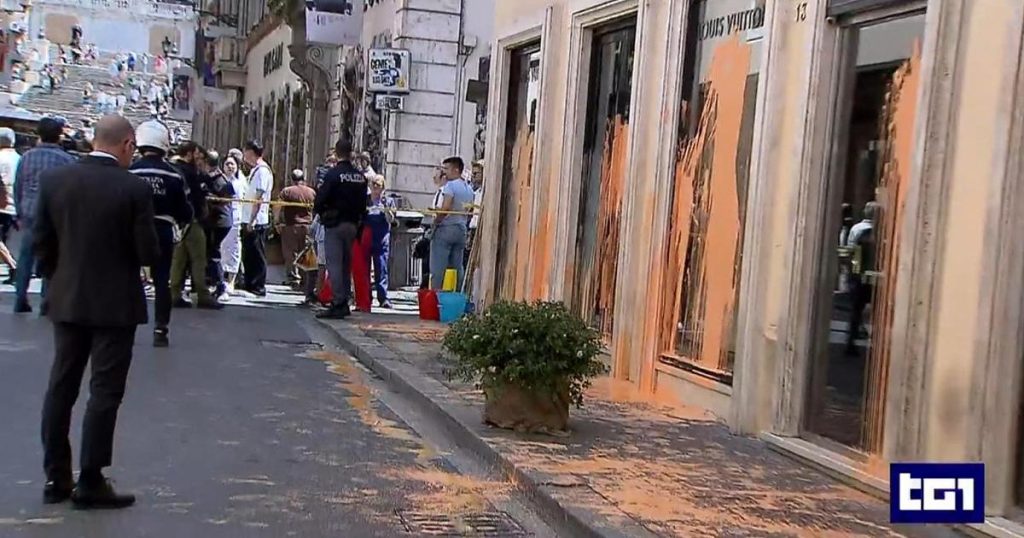Activists vandalized the columns at the entrance of the ministry by spraying black paint. Police units including the Mobile Unit, the Trevi precinct, Digos, and forensic experts were called to the scene. Some individuals sprayed paint while others attacked posters before being taken to the precinct. The activists posted on social media, stating, “Today we colored the Ministry of Justice black. There is only mourning without climate justice.”
The protest was fueled by a sense of injustice regarding climate issues. The activists took action by defacing the ministry building to bring attention to the lack of climate justice. This act of vandalism was seen as a statement against the government’s perceived inaction towards climate change. The police were quick to respond, and those involved were taken into custody. The activists used social media to explain their motives, emphasizing the urgency of addressing climate issues.
The presence of multiple police units highlights the seriousness with which the authorities viewed the vandalism. The Mobile Unit, the Trevi precinct, Digos, and forensic experts were all involved in the investigation. The activists’ actions were met with a strong response from law enforcement, as they were quickly apprehended. The activists’ message about the need for climate justice was clear, but their methods of protest were deemed illegal and unacceptable by officials.
The activists’ decision to deface the ministry’s entrance columns was a deliberate move to draw attention to their cause. By using black paint, they aimed to symbolize mourning for the lack of climate justice. The act of vandalism was intended to send a message to the government and society about the urgency of addressing climate issues. While the activists believed they were raising awareness through their actions, law enforcement viewed their behavior as criminal and took swift action to apprehend them.
The activists’ social media posts after the incident further highlighted their commitment to raising awareness about climate justice. By sharing their motives online, they sought to engage a wider audience and spark conversations about the urgent need for action. The activists’ message about climate justice without real progress was clear in their posts, but the means they chose to express it were controversial. The incident at the ministry of Justice served as a stark reminder of the growing concerns about climate change and the frustrations among activists who feel that not enough is being done.
In conclusion, the activists’ decision to vandalize the ministry building was a bold statement aimed at bringing attention to climate justice. The authorities responded swiftly to the incident, with multiple police units involved in the investigation. The activists’ message about the urgency of addressing climate issues was clear, but their methods of protest were considered illegal and unacceptable. The incident served as a reminder of the tensions surrounding climate change and the increasing frustrations among activists who feel that more needs to be done to address the issue.















